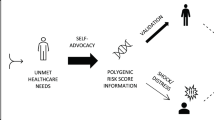Abstract
Direct-to-consumer (DTC) advertising of pharmaceutical drugs is often cited as the culprit for inflated patient demand for advertised drugs. Further to this economic concern, we provide an evidence-based psychological account of another concern that warrants the re-examination of the merits of DTC advertising of prescription drugs. Across six experiments and a sample of 3,059 US participants, we find reliable evidence for the argument dilution effect. Specifically, when commercials list severe side effects along with those that are most frequent (which include both serious and minor side effects), as required by the Food and Drug Administration, it dilutes consumers’ judgements of the overall severity of the side effects, compared with when only the serious side effects are listed. Furthermore, consumers’ reduced judgement of severity leads to greater attraction to those drugs. In regulating pharmaceutical advertisements, the Food and Drug Administration appear to have paradoxically dampened consumers’ judgements of overall severity and risk, and increased the marketability of these drugs.
This is a preview of subscription content, access via your institution
Access options
Access Nature and 54 other Nature Portfolio journals
Get Nature+, our best-value online-access subscription
$29.99 / 30 days
cancel any time
Subscribe to this journal
Receive 12 digital issues and online access to articles
$119.00 per year
only $9.92 per issue
Buy this article
- Purchase on Springer Link
- Instant access to full article PDF
Prices may be subject to local taxes which are calculated during checkout

Similar content being viewed by others
References
Vastag, B. US aims to tighten rules on direct-to-consumer drug ads. Nat. Biotechnol. 25, 267–267 (2007).
Food and Drug Administration Regulatory Modernization Act of 1997, H.R. 1411, 105th Cong., 1st Sess. (1997); https://www.fda.gov/RegulatoryInformation/LawsEnforcedbyFDA/SignificantAmendmentstotheFDCAct/FDAMA/FullTextofFDAMAlaw/default.htm
Mogull, S. A. Chronology of direct-to-consumer advertising regulation in the United States. Am. Med. Writ. Assoc. J. 23, 106–109 (2008).
Pines, W. L. A history and perspective on direct-to-consumer promotion. Food Drug Law J. 54, 489–518 (1999).
Mintzes, B. Direct to consumer advertising is medicalising normal human experience. BMJ 324, 908–911 (2002).
Saul, S. Senate leader calls for limits on drug ads. The New York Times Politics (2 July 2005).
Kahneman, D. & Tversky, A. On the psychology of prediction. Psychol. Rev. 80, 237–251 (1973).
Nisbett, R. E., Zukier, H. & Lemley, R. E. The dilution effect: nondiagnostic information weakens the implications of diagnostic information. Cognit. Psychol. 13, 248–277 (1981).
Zukier, H. Situational determinants of behavior. Soc. Res. 49, 1073–1091 (1982).
Zukier, H. & Jennings, D. L. Nondiagnosticity and typicality effects in prediction. Soc. Cogn. 2, 187–198 (1984).
Meyvis, T. & Janiszewski, C. Consumers’ beliefs about product benefits: the effect of obviously irrelevant product information. J. Consum. Res. 28, 618–635 (2002).
Troutman, C. M. & Shanteau, J. Inferences based on nondiagnostic information. Organ. Behav. Hum. Perform. 19, 43–55 (1977).
Anderson, N. H. Integration theory and attitude change. Psychol. Rev. 78, 171–206 (1971).
Anderson, N. H. Application of an additive model to impression formation. Science 138, 817–818 (1962).
Biegler, P. & Vargas, P. Ban the sunset? Nonpropositional content and regulation of pharmaceutical advertising. Am. J. Bioeth. 13, 3–13 (2013).
Petty, R. E. & Cacioppo, J. T. Communication and Persuasion 1–24 (Springer, New York, 1986); https://doi.org/10.1007/978-1-4612-4964-1_1
Zhao, X., Lynch, J. G. & Chen, Q. Reconsidering Baron and Kenny: myths and truths about mediation analysis. J. Consum. Res. 37, 197–206 (2010).
MacKinnon, D. P., Krull, J. L. & Lockwood, C. M. Equivalence of the mediation, confounding and suppression effect. Prev. Sci. 1, 173–181 (2000).
Schwartz, L. M. & Woloshin, S. The drug facts box: improving the communication of prescription drug information. Proc. Natl Acad. Sci. USA 110, 14069–14074 (2013).
Aikin, K. J., O’Donoghue, A. C., Swasy, J. L. & Sullivan, H. W. Randomized trial of risk information formats in direct-to-consumer prescription drug advertisements. Med. Decis. Mak. 31, E23–E33 (2011).
Deese, J. & Kaufman, R. A. Serial effects in recall of unorganized and sequentially organized verbal material. J. Exp. Psychol. 54, 180–187 (1957).
Spencer, S. J., Zanna, M. P. & Fong, G. T. Establishing a causal chain: why experiments are often more effective than mediational analyses in examining psychological processes. J. Pers. Soc. Psychol. 89, 845–851 (2005).
Relations, A. M. AMA calls for ban on direct to consumer advertising of prescription drugs and medical devices. American Medical Association (17 November 2015); http://www.ama-assn.org/ama/pub/news/news/2015/2015-11-17-ban-consumer-prescription-drug-advertising.page
Thaler, R. H. & Sunstein, C. R. Libertarian paternalism. Am. Econ. Rev. 93, 175–179 (2003).
Daft, R. L. & Lengel, R. H. organizational information requirements, media richness and structural design. Manag. Sci. 32, 554–571 (1986).
Acknowledgements
The funders had no role in study design, data collection and analysis, decision to publish or preparation of the manuscript. We thank N. Ramkumar for assistance with materials for Study 2a.
Author information
Authors and Affiliations
Contributions
N.S. developed the research idea. N.S. and H.K. designed the experiments; H.K. analysed the data; and N.S. and H.K. wrote the paper.
Corresponding author
Ethics declarations
Ethics statement
The ethics approval for this project was provided by London Business School as per the school’s guidelines. In line with ethical guidelines, all participants provided informed consent before taking part in the studies.
Competing interests
The authors declare no competing interests.
Additional information
Publisher’s note: Springer Nature remains neutral with regard to jurisdictional claims in published maps and institutional affiliations.
Electronic supplementary material
Supplementary Information
Supplementary Methods, Supplementary Table 1.
Life Sciences Reporting Summary
Life Sciences Reporting Summary
Rights and permissions
About this article
Cite this article
Sivanathan, N., Kakkar, H. The unintended consequences of argument dilution in direct-to-consumer drug advertisements. Nat Hum Behav 1, 797–802 (2017). https://doi.org/10.1038/s41562-017-0223-1
Received:
Accepted:
Published:
Issue Date:
DOI: https://doi.org/10.1038/s41562-017-0223-1
This article is cited by
-
Pharmaceutical Advertising and the Subtle Subversion of Patient Autonomy
Journal of Medical Humanities (2022)
-
Direct-to-Consumer Broadcast Advertisements for Pharmaceuticals: Off-Label Promotion and Adherence to FDA Guidelines
Journal of General Internal Medicine (2018)
-
More risks can feel less risky
Nature Human Behaviour (2017)
-
Nebenwirkungslisten sind kontraproduktiv!
MMW - Fortschritte der Medizin (2017)
-
Side effect reporting in direct-to-consumer drug advertising
Reactions Weekly (2017)



